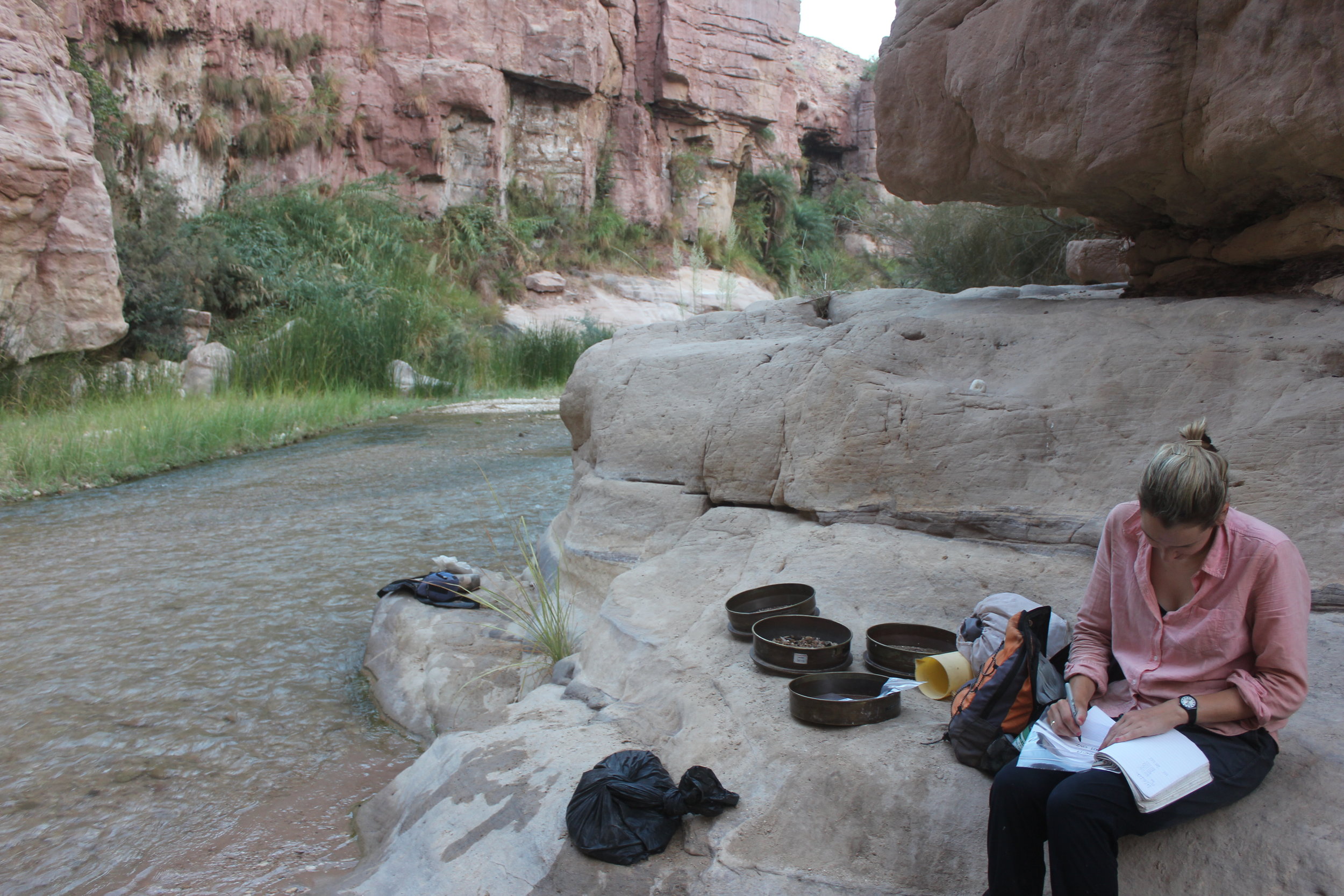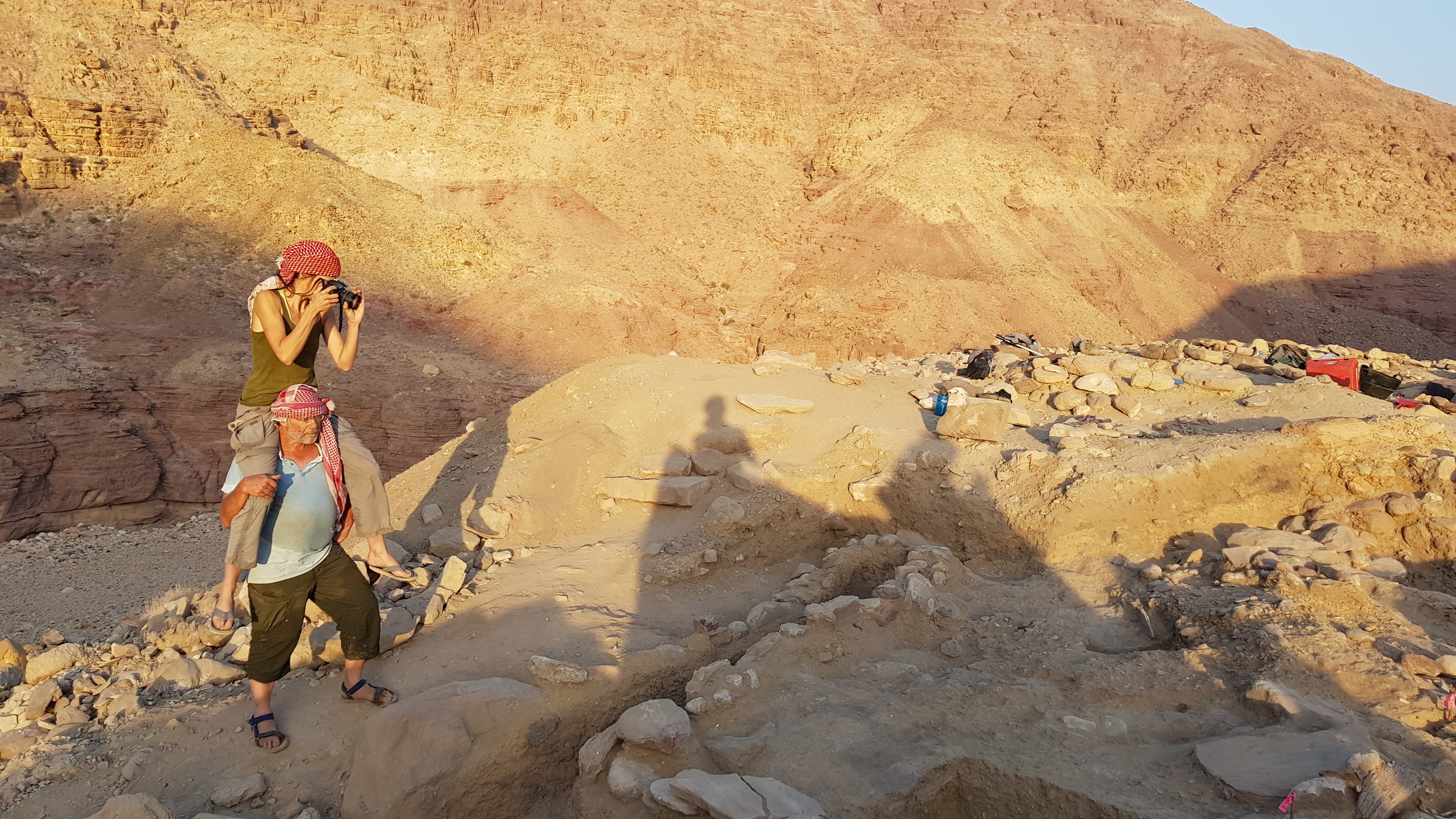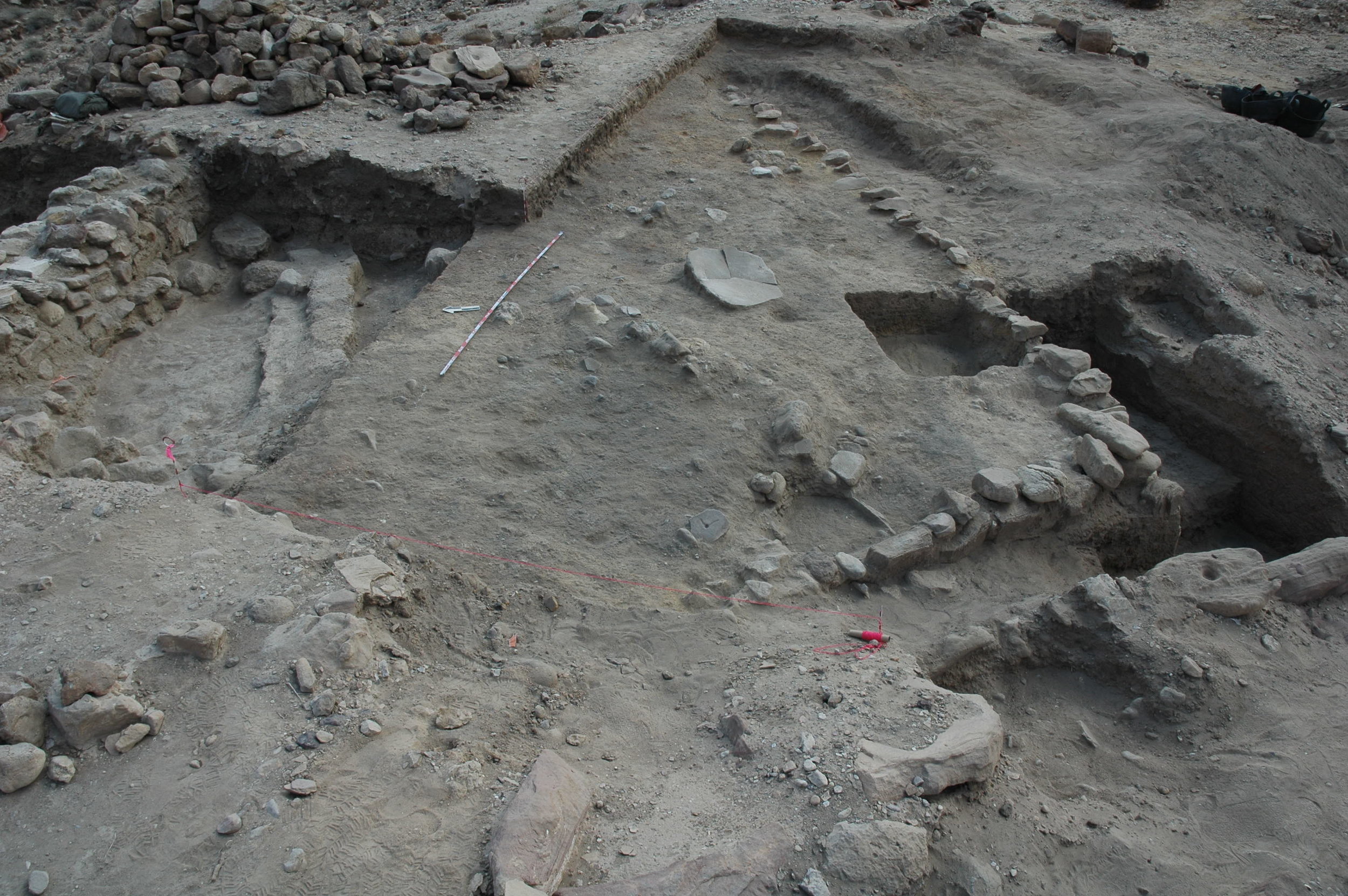Research at Sharara
Sharara is a Pre-Pottery Neolithic A (PPNA) settlement located in the rocky wilds of the Wadi el-Hasa, Jordan. Our work at Sharara explores a critical moment in human prehistory over ten thousand years ago when hunter-gatherers began first experimenting with plant agriculture and living in increasingly sedentary communities notable for their use of architecture to create a new built environment. Our research investigates plant cultivation and storage. Sharara informs larger discussions on how locally defined plant and animal exploitation strategies contributed to wider transformations in the Neolithic world, and also how food production may have been linked to an increasing sense of place fixed through communal architecture.
.
First cultivators
During the PPNA, people experimented with barley cultivation while continuing to gather wild plants and hunt game such as ibex and gazelle. However, the location of Sharara in the steep and rocky mountains of the lower Wadi Hasa may have made growing cereals difficult. We explore how people exploited other cultivars, including figs and lentils, and also how these first cultivators intentionally modified the local landscape to produce these crops.
Communal Architecture
Communal architecture played an important role in structuring the social worlds of the earliest Neolithic villages in southern Jordan. At Sharara, we explore how communal buildings served as an arenas of performance and celebration that knit together households and communities.
Mortuary Practices
The manipulation and transportation of human remains revealed by PPNA mortuary practices suggests these rites were an important ingredient in developing the sense of a community fixed in the landscape. We investigate the use of ritual spaces reserved exclusively for mortuary activities.


















